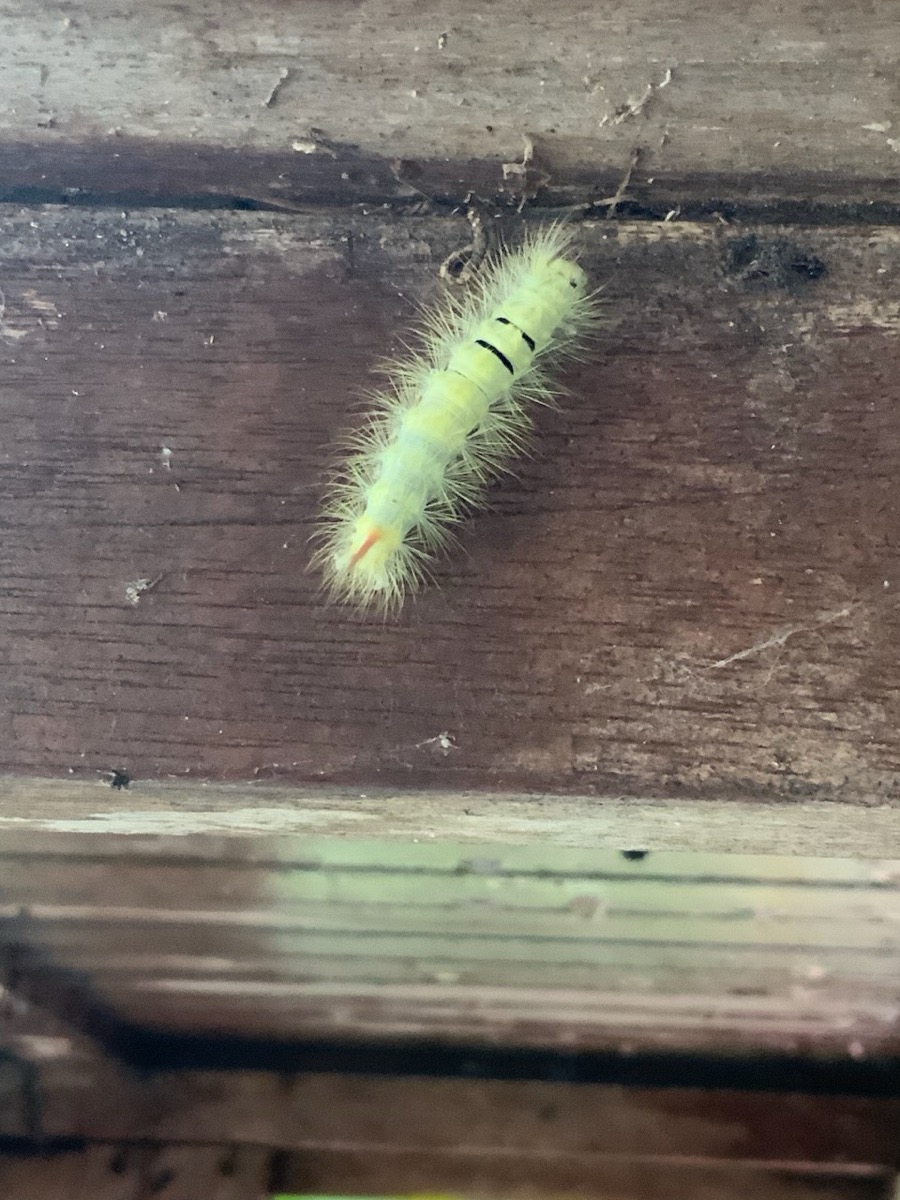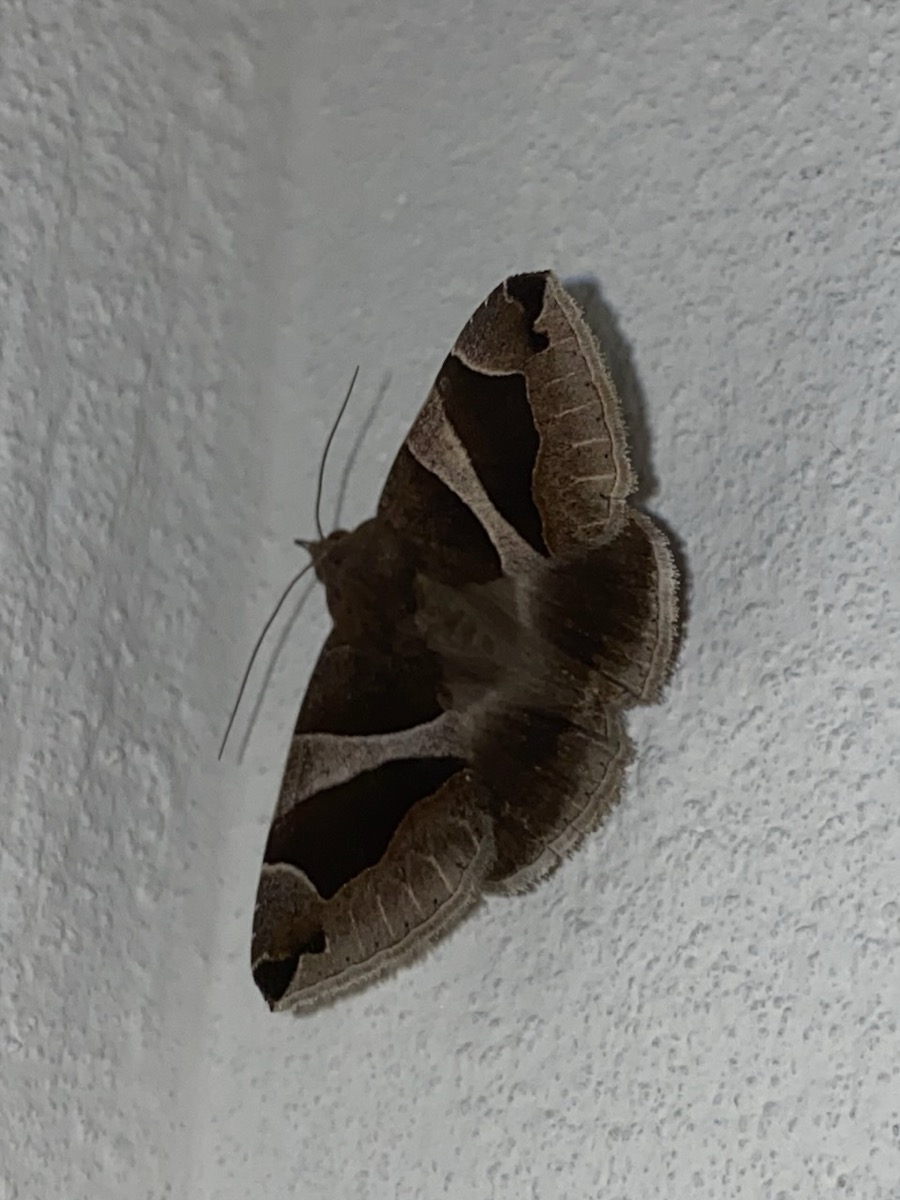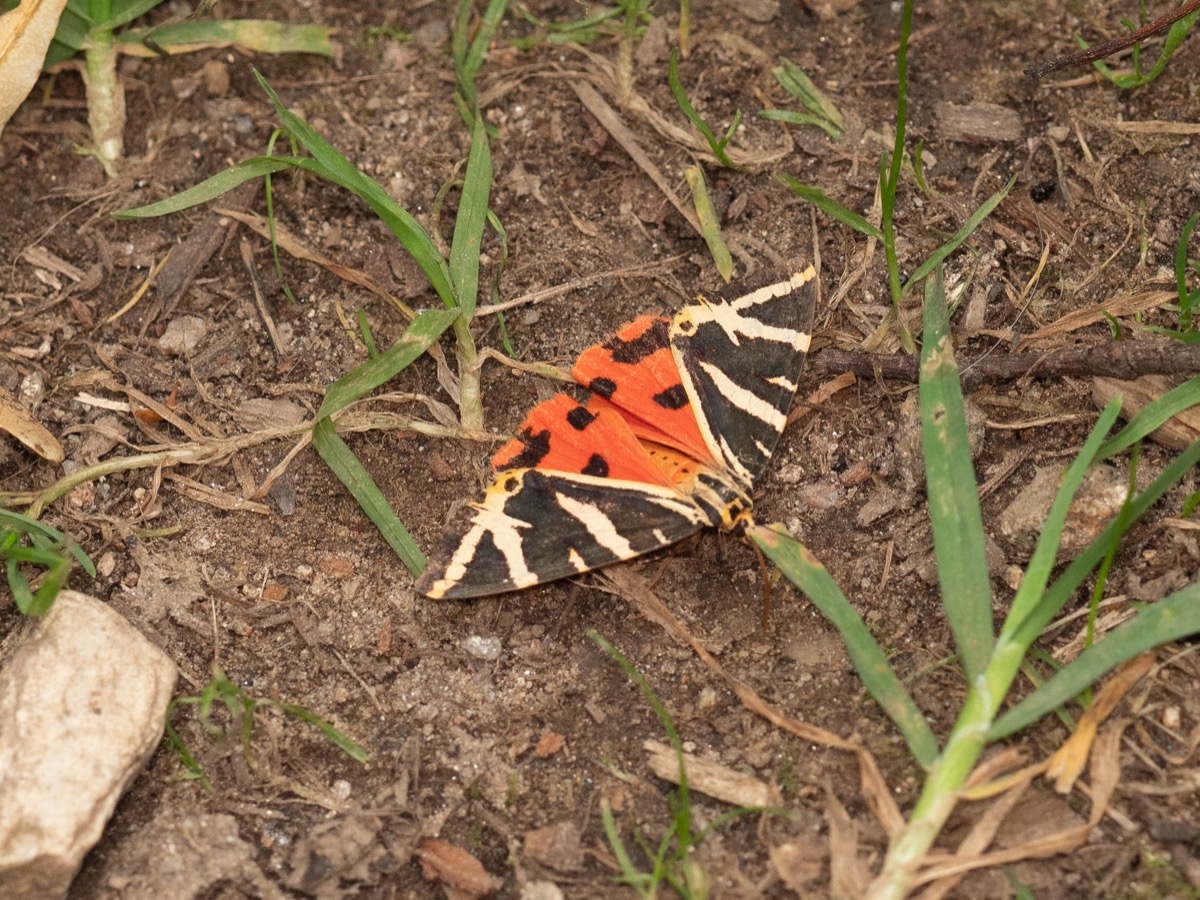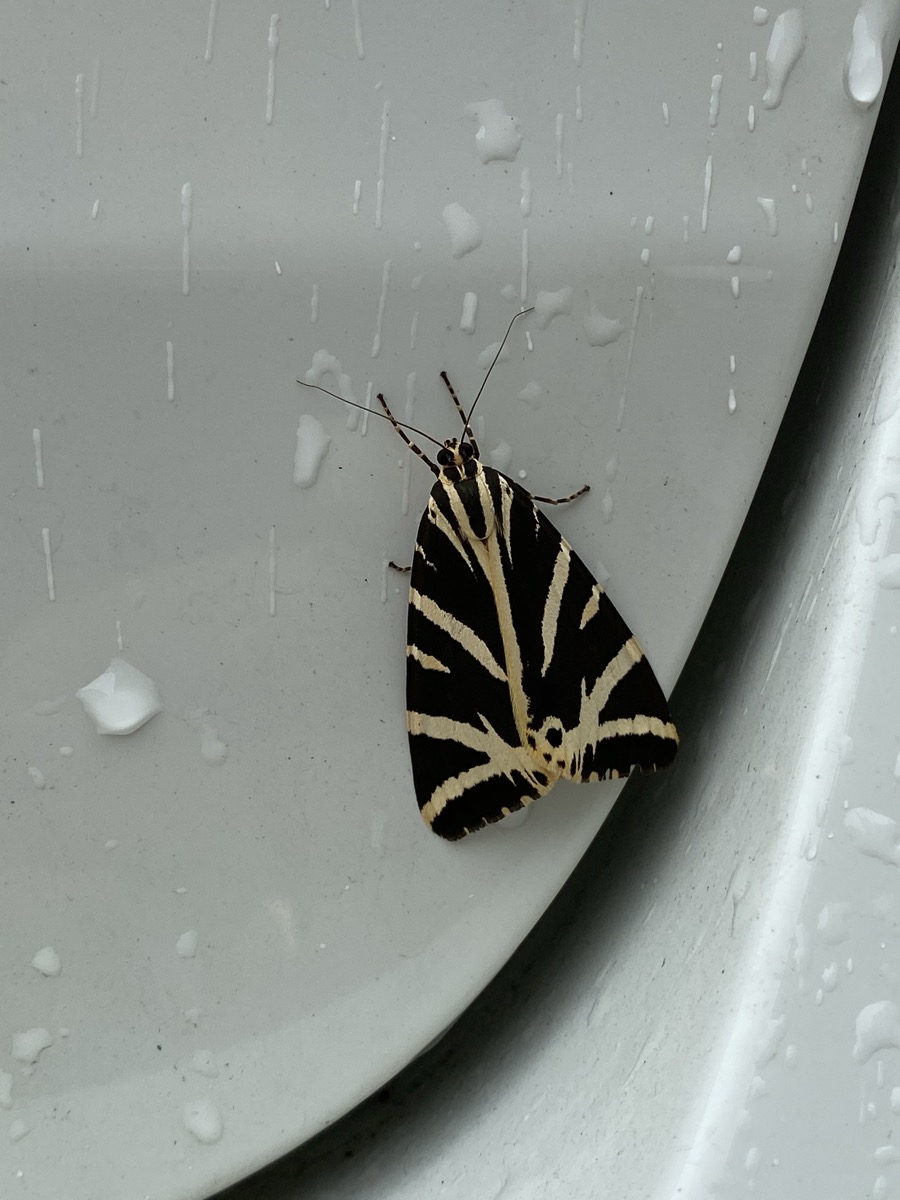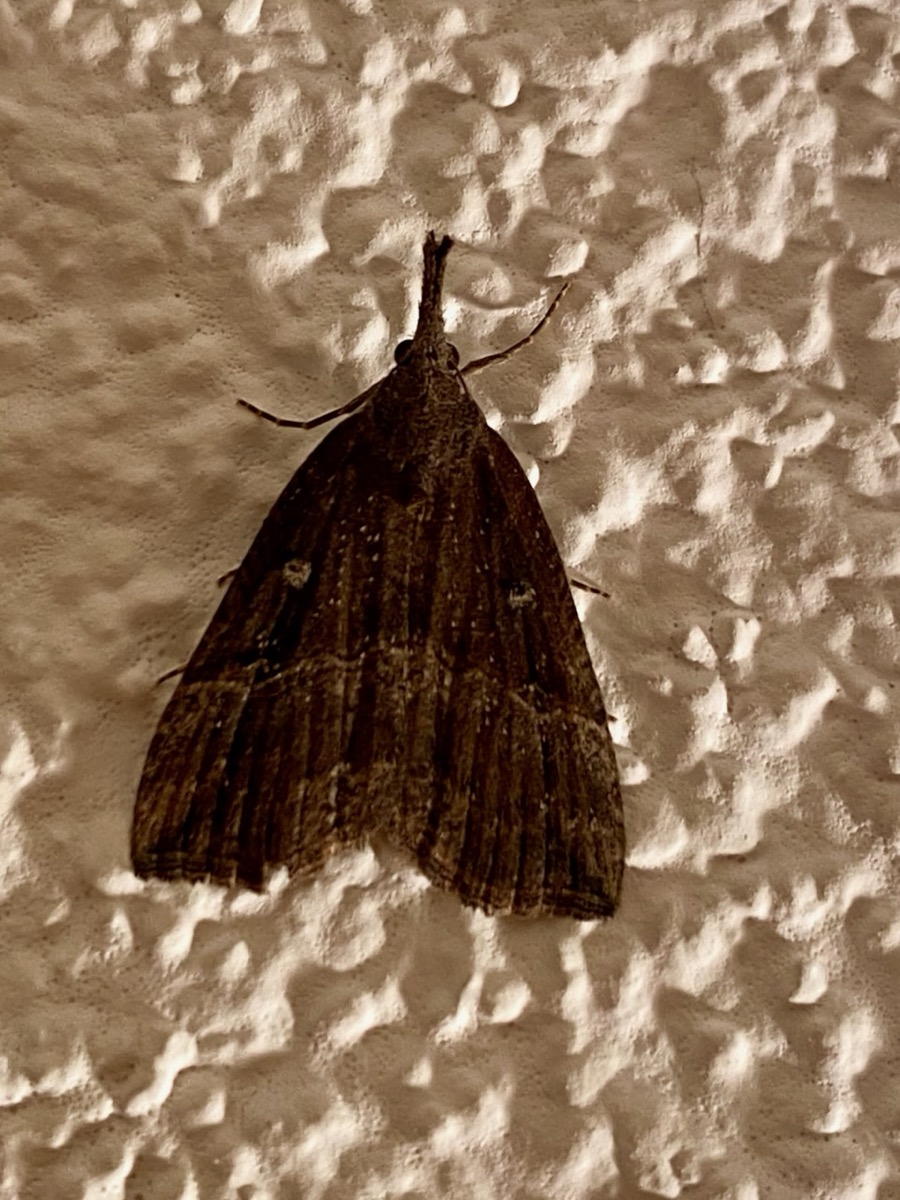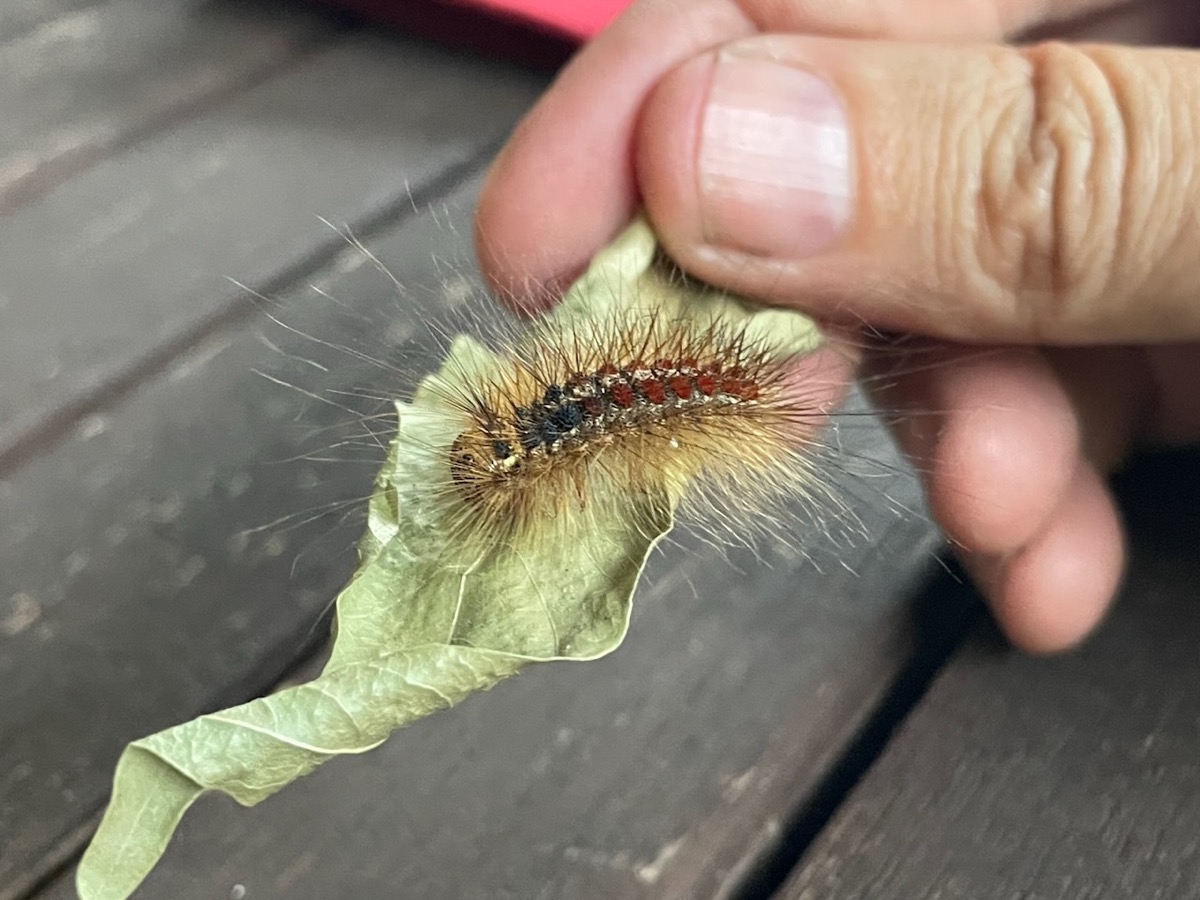The Erebidae family is the most diverse moth family, with more than 24,500 known species! (Wikipedia)
Characteristics
- Variable size, often medium to large
- Very heterogeneous coloration: from cryptic browns to vivid aposematic tones
- Filiform or pectinate antennae, depending on sex and subfamily
- Mostly nocturnal flight, though some are diurnal (e.g., Arctiinae)
- Proboscis developed or reduced depending on the genus
Habitat
Erebidae can be found in:
- Temperate and tropical forests, meadows, dry or humid environments
- Hedgerows, gardens, wastelands, forest edges
- Urban zones (some ubiquitous species)
- From sea level to mountainous regions
Biology
- Eggs laid on a wide variety of host plants
- Highly variable larvae: smooth, spiny, or densely hairy
- Some are urticating (especially Lymantriinae)
- Pupation occurs in a cocoon or in the soil
- One to several generations per year depending on species and climate
Main subfamilies
- Arctiinae – Tiger moths: often colorful, diurnal or nocturnal (Arctia, Callimorpha, Euplagia)
- Lymantriinae – Hairy caterpillars, sometimes pests (Lymantria dispar)
- Herminiinae – Small, brownish, ground-dwelling moths (nocturnal herbivores)
- Hypeninae, Boletobiinae, Calpinae – Generalist or tropical diversity
Notable species
- Arctia caja – Garden Tiger: bright orange-red hindwings with black spots
- Euplagia quadripunctaria – Jersey Tiger: black and cream-striped forewings, red hindwings
- Lymantria dispar – Gypsy Moth: invasive in North America
- Catocala spp. – “Underwings”: cryptic forewings, vividly colored hindwings
Special features
- Frequent aposematism: bright colors warning of toxicity or bad taste
- Some species mimic wasps or diurnal butterflies
- Some caterpillars are used in citizen science programs (monitoring, alerts)
- The family is still under taxonomic and phylogenetic revision
